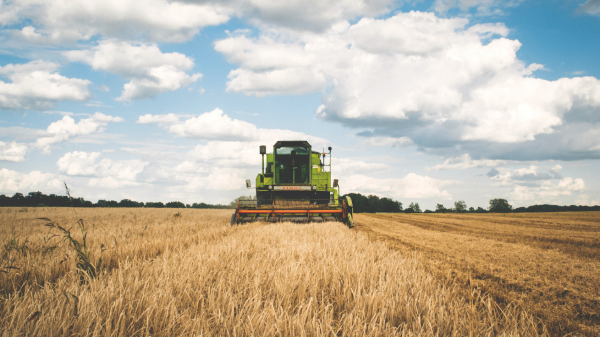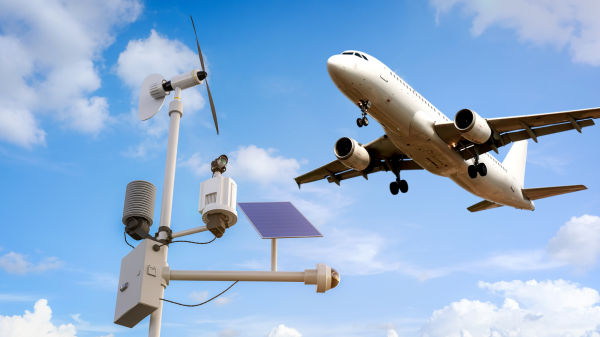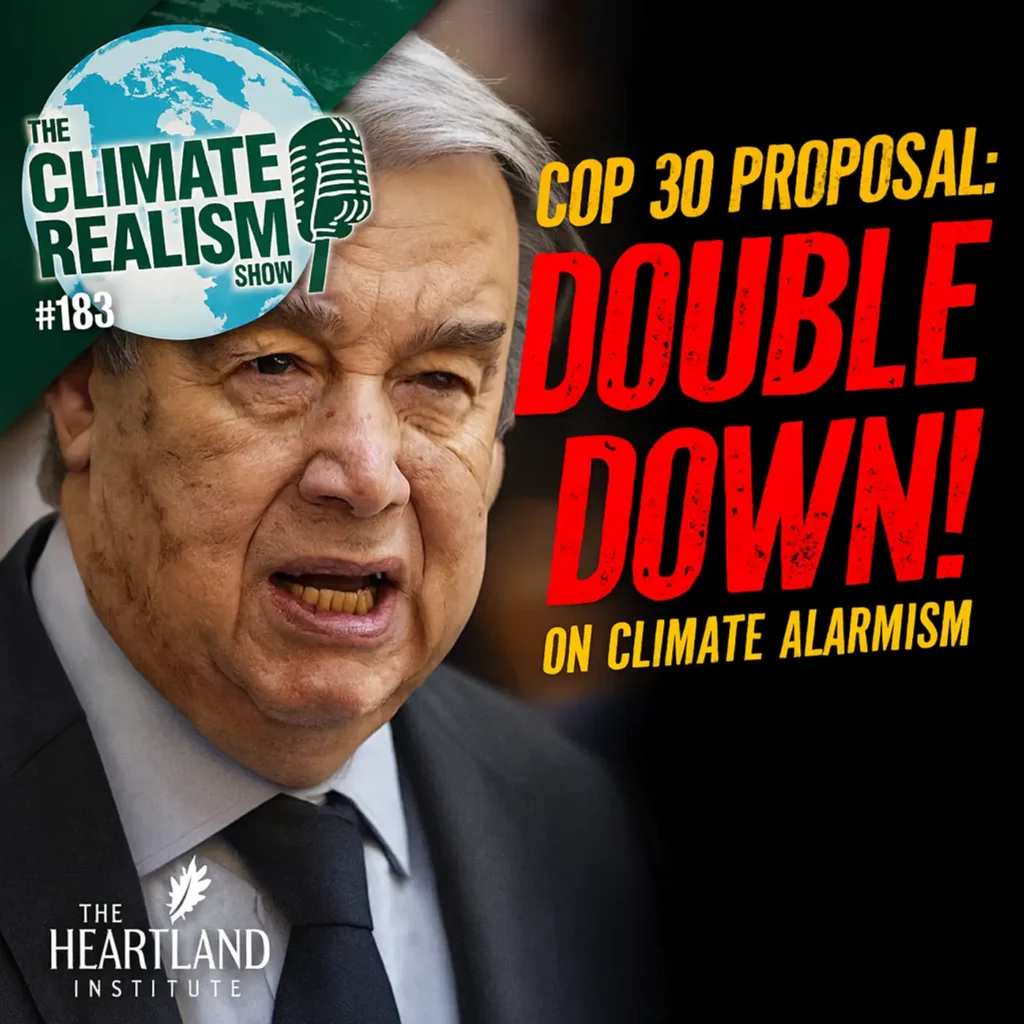IN THIS ISSUE:
- What I Said on World Salon about Agriculture and Climate Change
- Temperature Data Is Worse Than Believed; Often It’s Not Data at All

What I Said on World Salon about Agriculture and Climate Change
I was honored a couple of weeks ago to be invited by Charlie Du, president of Columbia University Global Dialogue and founder of the World Salon series and website, to participate as a panelist on a World Salon Fireside Talk Series livestream discussion titled “Policy to Plate: Climate-Smart Solutions for Agriculture.”
The panel consisted of five participants and a moderator. The other four panelists and the moderator likely know more about the details of agriculture, especially in developing counties, than I. I’ve written about agriculture (including forestry and aquaculture) in the past, including chapters in books and articles for peer-reviewed journals and for various think-tank publications, but what I really brought to the table was my knowledge of climate change and policy. Looking at the lineup of speakers—which you can do at the link below—one could guess that in a sense I was the odd man out, at least vis-à-vis concern about climate change’s impacts on agriculture and the value of the continued use of fossil fuels, including for synthetic fertilizers and pesticides.
After introductions, the moderator began with a set of guided questions, one for each panelist. The question posed to me was, “Based on your experience with environmental policy in
think tanks, advisory boards, and task forces, what do you see as the best climate resilience and adaptation strategies that balance environmental protection, economic freedom, and energy security?” Below is the response I gave.
I would hope that everyone on this panel and in the online audience would agree that feeding the world’s growing population is among the most pressing issues facing humanity. In addition, we would like to do so without transforming more wild landscapes and forests into fields or pastures, while also reducing the burden on sea life.
Hunger has always been with us, but we have the tools to reduce it dramatically, in the near term, not 50 or 100 years from now, unless governments, corporations, and NGOs interfere with the expansion of modern, high-yield agricultural technologies, which includes synthetic pesticides, fertilizers, and fossil fuels to power pumps, machinery, and modern storage technologies and facilities to reduce food waste.
The godfather of the green revolution—Nobel Prize-winning agronomist Norman Borlaug, who led the spread of modern farming technologies to developed countries—is credited with preventing more than a billion deaths from starvation. We’ve come a long way since Borlaug’s leading promotion of the use of synthetic chemicals to enhance and improve crop growth, allowing double cropping, and his pioneering work to develop genetic high-yield varieties of crops and crops with resistance to various types of diseases. Borlaug’s methods produced more food while reducing land conversion.
I agree with many of the tenets of what is often referred to almost interchangeably as “sustainable” or “regenerative” agriculture, such as improving soil health through rotational cropping and reduced tillage, improved water use efficiency, and the planting of cover crops. Where feasible, I also endorse green belts around fields and maintaining copses or groves of trees within farm fields. However, I have seen no evidence that we can sustain present yields and production, much less increase them as we need to do to feed a growing population, with those methods alone, at least not without what I would consider to be an unacceptable conversion of wildlands into farmland. That is especially important considering the global population is projected to continue growing for at least the next 20 to 50 years before possibly plateauing.
This means, unless and until better technologies and improved substitutes for synthetic fertilizers are available, it is critical that we continue to use them judiciously and expand their use to countries and regions which currently lack access to them, along with the energy systems that make modern life possible. I was glad to see Zane (one of my fellow panelists) address genetic engineering and not derogatorily. I endorse the idea of genetically modifying (GM) crops for better pest resistance, reduced spoilage, and improved nutrition. My hope is we can reduce the need for the giant land expansion that the World Resources Institute has estimated would be necessary to provide the world’s people with adequate nutritious food, through the expanded development and commercialization of GM crops.
It is not just lack of access to fossil fuels and modern farming technologies that hamper crop production, yields, and sales in and from poor nations; it is various types of farm subsidies, price supports, and other protectionist measures in developed countries, which result in overproduction and undermine the ability of many countries to export their crops.
By the way, I extend this analysis to fishing subsidies as well, which have encouraged waste and overharvest, often destroying local fishing communities in developing countries in the process. These should end. Indeed, most of those subsidies go not to family farmers or farm communities but to big agricultural companies and wealthy farmers.
In addition, government policies that push biofuels are decimating wildlands and forests in developing countries, to salve the green consciousness of elites in the West. This despite the fact that it is doubtful whether biofuels as they are currently produced are “greener” in any meaningful sense than traditional gasoline or diesel. And even worse, they often amount to an immoral food-for-fuel tradeoff, taking crops away from human consumption and animal feed for an unnecessary fuel source, resulting in higher food prices in the process.
I am not endorsing farmers in developing countries shifting to commercial crops, or at least not solely. There is no reason to think that for many traditional fruits and vegetables native to various regions, staples for those areas’ people, that modern methods can’t be used to increase yields of those. And there is likely a growing market for them. We in the West live in truly multicultural societies. In Dallas, where I’m from, there are hundreds, if not thousands, of ethnic restaurants and grocery stores representing peoples from Africa, South America, Asia, and beyond, serving both recent immigrants and Westerners with a taste for adventure and variety. Agricultural products that would have been considered unusual 30 years ago are increasingly becoming more common, if not mainstream. These are markets farmers in developing countries can, perhaps uniquely, cater to.
You will note I’ve not mentioned climate change. I recognize that it is happening, and humans are likely contributing at least marginally to it, but I see no evidence of catastrophe in the available data.
Science is not an outcome but a method, where theories are tested against real-world measurements. Forecasted and warned-of climate disasters and tipping points haven’t proved out so far. Climate models are inadequate to the task of representing temperature changes accurately, much less their ancillary predictions. Indeed, as detailed daily at Climate Realism and Climate at a Glance, the supposedly catastrophic consequences that human-caused climate change have been forecast and asserted to be visiting on the Earth and civilization are still not in evidence. Doom is nowhere on the horizon. Even the Intergovernmental Panel on Climate Change can’t identify significant changes in extreme weather or other types of harm commonly predicted by alarmists to flow from climate change.
This leads us to resilience and adaptation. A common adage is wealthier is healthier. Improved health outcomes—longer lifespans, reduced infant and premature mortality, lives lost to non-optimum temperatures and extreme weather events—are all improving and directly correlated to increased national GDP and household wealth.
Research also suggests that once incomes and economic development reach a certain level, a country’s people and their government devote increasingly larger portions of their resources to environmental protection. Policies that prevent the Third World from reducing energy poverty by developing and/or using fossil fuels, using modern agricultural methods and technologies, and accessing markets limit poor nations’ ability to improve both their lots in life and the environment.
I’m not wise enough to anticipate future climate conditions on either a global or regional level, and neither is anyone else so prescient. We also do not know what the carrying capacity of the Earth is—people have been getting that wrong since Malthus, failing to understand humans, exercising human ingenuity, are the ultimate resource. What we do know is wealthier nations are more resilient in the face of disasters and recover faster from them than poorer nations do.
Therefore, my best recommendation is to improve people’s anticipatory, adaptive capacities, and resilience to climate change, whatever its cause and impacts, by helping people become as wealthy as possible as soon as possible.
Source: World-Salon

Temperature Data Is Worse Than Believed; Often It’s Not Data at All
Additional proof is being revealed, almost weekly, that official temperature data shouldn’t be trusted as proof of “catastrophic” climate change.
The Heartland Institute, and Climate Change Weekly in particular, have over the years detailed the failings and flaws of various official weather recording and reporting agencies in countries around the world. We’ve also shown how the data has been manipulated, adjusted, or “homogenized,” biased by the Urban Heat Island (UHI) effect, or even made up entirely. The latter brings us to the newest revelation of fabricated “data.”
Climate scientist Matthew Wielicki, Ph.D., recently discussed a couple of problems he identified with the surface station measurements, including gaps in past data the government helpfully fills in from other, often distant locations, and specific problems from airports that badly skew recorded temperatures.
Concerning the former, Wielicki notes the surface station coverage for much of the globe was sparse or largely nonexistent as late as the 1950s. Wielicki writes,
Before 1950, most thermometers were in the United States, Europe, and parts of the British Commonwealth. Large parts of Africa, South America, the Arctic, and the Southern Ocean had little to no routine coverage. Even the NOAA-led overview of GHCN-Daily notes how the core database is a collage of many sources with varying periods of record… that is the raw material modern analyses inherit.
Now the uncomfortable part. When there are no thermometers, you either leave grid boxes blank, or you paint numbers in from far away. HadCRUT historically left many boxes blank, explicitly avoiding interpolation, which means the “global” mean depends on where you have observations. NASA’s GISTEMP goes the other direction and spreads anomalies up to twelve hundred kilometers from a station, filling the gaps with 1200 km smoothing. Those are not trivial choices, they are the ballgame.
If you overlay the 1930s anomaly map with the station density maps, you see something obvious… warm where the thermometers were numerous, cool or neutral where coverage was threadbare. A compilation of historical station distribution between 1921 and 1950 makes the same basic point… the network was sparse and badly unbalanced.
So the way the historical record is assembled and reported by GISTEMP, it provides patently made-up temperatures for large parts of the globe, whereas HadCrut avoids that, providing relatively accurate temperatures at the expense of having no data for large areas of the globe. Either made-up data or no data: those are your choices to build the so-called “global average temperature” for the past, with the global average temperature being also a made-up metric with no real meaning outside of sparking climate alarm when one arbitrarily chooses a particular time period as representing the ideal for comparison.
As bad as that is, Wielicki adds to the growing literature detailing the UHI and its causes, with new specificity as to the cause in many urban locations. He notes that in recent years many cities have claimed new temperature records, measured over very short time periods. These records are invariably set at airports, measured during a brief span of time when large jets are idling near sensors or ramping up the engines for departure near a temperature sensor.
“Fast forward to the present day and we add a new contaminant… urban heat and airport placement,” writes Wielicki. “I have shown, with time-matched photos and flight logs, how Tampa’s much hyped 100°F ‘record’ was a five-minute artifact of a Delta jet idling beside the sensor.
“I walked through the same playbook in Phoenix when Sky Harbor trotted out an ‘August record’ built on back-to-back departure plumes,” reports Wielicki. “If you missed those, read my recent two-parter, Jet-Fueled Lies: Tampa’s Fake Temperature Record and Jet-Fueled Lies, Phoenix Edition [and I add, Urban Heat Islands and Record Heat in Las Vegas: Unpacking the Causes Beyond Climate Change]. They are cautionary tales about how compromised data gets laundered into national datasets and weaponized into headlines.”
Each of the cases is the same. On an already hot day, a new record temperature for the area (at the airport) is recorded and breathlessly reported, with the record temperature being very short-lived and coinciding with a single or multiple jets idling or ramping up for takeoff in close proximity to the official temperature sensor. The record temperature quickly falls off after the jets have departed. I would be unsurprised to find that this is the norm for surface temperatures recorded by sensors at airports in other locations as well. These record temperatures are then counted as representing the temperature for the larger region and put into a dataset and averaged, resulting in reports of record temperatures set for the nation or the globe.
The particularly severe or steep temporary kind of urban heat island effect from jet exhausts at airports is not widely recognized, yet it badly skews the overall surface station dataset—and reporting on temperatures.
Sources: Irrational Fear; Climate Change Weekly



